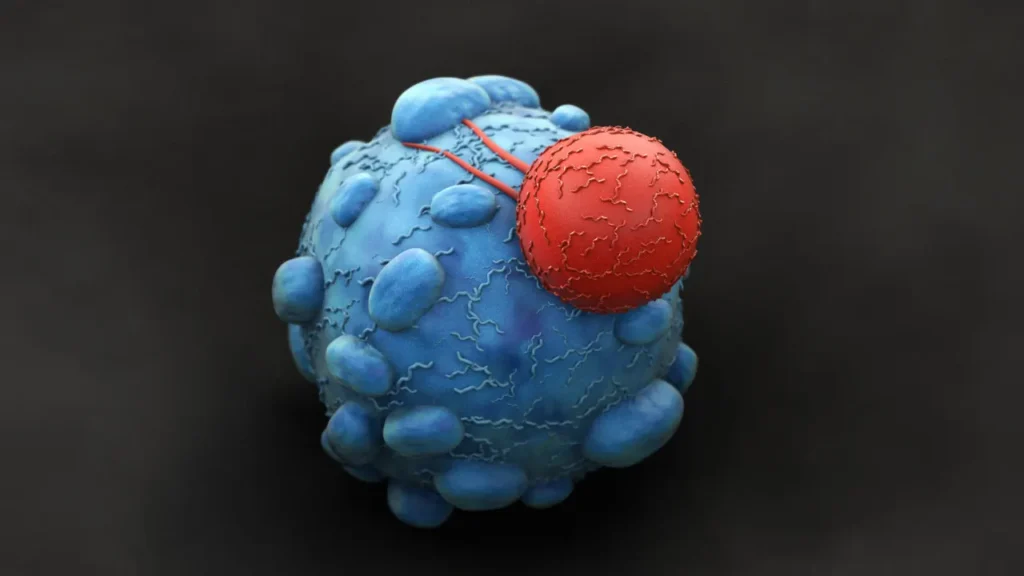The scientific community has become interested in the hemiparasitic American mistletoe (Phoradendron leucarpum) due to its potential therapeutic uses. The bioactive components in American mistletoe, particularly its lectins and viscotoxins, have been the subject of numerous studies investigating the plant’s possible health advantages. This article explores the characteristics of American mistletoe, as well as the best dosage, adverse effects, potential drug interactions, and responsible use.
You May Also Like:
Beeswax: Benefits, Dosage, Side Effects, Drug Interactions, And Other Important Information
American Mistletoe: Benefits, Dosage, Side Effects, Drug Interactions, And Other Important Information is an original (NootropicsPlanet) article.
Nature of American Mistletoe
As a hemiparasitic plant, American mistletoe utilizes the water and nutrients from its host tree while also photosynthesizing to create its own carbohydrates. More than 60 distinct tree species, which are primarily found in the eastern and southern parts of the United States, have been documented to be parasitized by the plant. Its leaves, stems, and berries are where the majority of its medicinal chemicals are concentrated.
Lectins and viscotoxins are the two main classes of bioactive substances discovered in American mistletoe. Phoratoxins are lectins, which are glycoproteins with the capacity to attach to particular carbohydrate structures. They have the potential to be anti-cancer and can modify immune responses. Contrarily, viscotoxins are tiny, simple proteins with cytotoxic and immunomodulatory properties.
Health Benefits of American Mistletoe
Effects on Immune Modulation
The immune system is essential for keeping the body healthy and protecting it from diseases. It has been demonstrated that the lectins of American mistletoe activate a variety of immune cells, including macrophages, natural killer cells, and T-cells, to promote immunological responses. They can also trigger the release of cytokines, which are crucial for controlling immunological response and cell signaling. These characteristics imply that American Mistletoe would be a good option for creating brand-new immunotherapeutic drugs.
Cancer-Fighting Qualities
Due to its conceivable anti-cancer properties, American mistletoe has attracted interest. Its bioactive components have been shown in in vitro and in vivo investigations to suppress cancer cell proliferation, induce apoptosis, and decrease angiogenesis. Research into the use of American mistletoe as a supplemental cancer therapy has been sparked by the plant’s lectins and viscotoxins, which exhibit both immunomodulatory and cytotoxic effects.
Anti-inflammatory and Antioxidant Effects
Numerous chronic diseases, including cancer, cardiovascular disease, and neurological disorders, are linked to oxidative stress and inflammation. Antioxidant and anti-inflammatory qualities of American mistletoe make it useful for treating certain illnesses. The plant’s bioactive substances can inhibit inflammatory pathways and neutralize free radicals, which reduces cellular damage and inflammation.

Chemistry of American Mistletoe
The bioactive elements in American mistletoe that give rise to its medicinal potential fall into a number of categories.
- Lectins: These glycoproteins, especially Phoratoxins, have the capacity to attach to particular carbohydrate structures, influencing a range of cellular functions. Lectins in American mistletoe are further divided into various categories, each with a variety of biological activity, including ML-I, ML-II, and ML-III.
- Viscotoxins are tiny, simple proteins that have cytotoxic and immunomodulatory effects. A distinctive cysteine knot structure distinguishes viscotoxins, and based on their amino acid sequences and three-dimensional structures, they can be further separated into other classes, such as A-type and B-type viscotoxins.
- Flavonoids: The flavonoids in American mistletoe include quercetin, kaempferol, and apigenin. These substances have anti-inflammatory, anti-cancer, and antioxidant properties.
- Triterpenoids: It has been demonstrated that several of these chemicals, like oleanolic acid and betulinic acid, have anti-inflammatory, anti-cancer, and antiviral activities.
Physiological Mechanisms of Action
Through a variety of physiological pathways, American mistletoe’s numerous bioactive components contribute to its therapeutic effects:
- Immunomodulation: American Mistletoe lectins attach to certain carbohydrate structures on the surface of immune cells, including macrophages, natural killer cells, and T-cells, to trigger immunological responses. This binding stimulates cellular mechanisms that cause the release of cytokines, which are crucial for controlling immunological response and cell signaling. Viscotoxins can also modify the production of pro-inflammatory and anti-inflammatory cytokines and boost the cytotoxic activity of natural killer cells.
- Anti-cancer activity: The lectins and viscotoxins found in American mistletoe can stop the growth of cancer cells in a number of ways. By activating caspase enzymes and regulating the expression of pro- and anti-apoptotic proteins, they can cause apoptosis or programmed cell death. Additionally, by lowering the production of pro-angiogenic substances like vascular endothelial growth factor (VEGF), they can prevent angiogenesis, the process by which tumors create new blood vessels to support their growth.
- Antioxidant and anti-inflammatory properties: American mistletoe contains flavonoids that can inhibit reactive oxygen species, lowering oxidative stress and averting cellular damage. Nuclear factor-kappa B (NF-B) and mitogen-activated protein kinases (MAPKs), two enzymes and signaling pathways implicated in inflammation, can also be modulated by them. Triterpenoids, such as oleanolic acid and betulinic acid, reduce the activity of COX-2 and 5-lipoxygenase (5-LOX) enzymes to prevent the synthesis of pro-inflammatory mediators such as prostaglandins and leukotrienes.
In conclusion, the numerous bioactive chemicals in American mistletoe, including immunomodulatory, anti-cancer, antioxidant, and anti-inflammatory activities, give the plant its medicinal promise. The responsible use of American Mistletoe as a dietary supplement can be guided by knowledge of the chemistry and physiological mechanisms underlying these substances’ actions.


Optimal Dosage of American Mistletoe
The exact health condition that American Mistletoe is intended to treat and the person’s age, weight, and general health status must all be considered while determining the best dosage. Mistletoe extract is often provided as subcutaneous injections, gradually increasing the amount under a healthcare professional’s supervision. Depending on the precise preparation and treatment objectives, dosages in clinical investigations have ranged from 0.1 to 20 milligrams per injection. Speaking with a healthcare professional before starting is essential to verify the safety and efficacy of American mistletoe supplementation.
Side Effects of American Mistletoe
Although American mistletoe has shown possible health advantages, hazards are also involved. Local reactions at the injection site, such as redness, swelling, and discomfort, are the most typical side effects of its use. These reactions typically are minor and don’t last more than a few days. People occasionally report flu-like symptoms like fever, chills, exhaustion, and headaches, which are thought to be brought on by the immune-stimulating qualities of mistletoe.
Less frequently, more serious side effects such as allergic responses, respiratory problems, low blood pressure, and liver failure have been mentioned. It’s crucial to watch for these side effects and get help immediately if they show up.


Potential Substance Interactions with American Mistletoe
Various drugs and chemicals may interact with American Mistletoe, possibly causing negative side effects or reducing therapeutic efficacy. Among the possible interactions are:
- Immunosuppressive drugs: Due to its ability to boost the immune system, American Mistletoe may counteract the effects of immunosuppressive medicines, including corticosteroids, cyclosporine, and tacrolimus, which are often administered to treat autoimmune illnesses or prevent organ transplant rejection.
- Anticoagulant and antiplatelet medications: When used with drugs like warfarin, aspirin, or clopidogrel, American mistletoe has been shown to have anticoagulant and antiplatelet properties, which may raise the risk of bleeding.
- Chemotherapy and radiotherapy: Theoretically, American Mistletoe’s immunostimulatory actions may conflict with the targeted immunosuppressive effects of these treatments. However, recent research indicates that American Mistletoe may improve these treatments’ efficacy while minimizing their adverse effects. Clarifying these relationships and figuring out the best way to use American Mistletoe in cancer treatment methods will require more research.
Best Responsible Uses of American Mistletoe
It is crucial to utilize American mistletoe responsibly, given its possible advantages and concerns for health. Some suggestions for using it responsibly include:
- Speak with a healthcare expert: It is crucial to speak with a healthcare professional before beginning any supplement plan to identify whether American mistletoe is suitable for your individual health needs and to set a safe and effective dosing schedule.
- Select an established supplier: To reduce the possibility of contamination or adulteration, it’s important to choose American Mistletoe products from an established supplier, particularly one that follows Good Manufacturing Practices (GMP) and is subject to independent quality and purity testing.
- Keep an eye out for interactions and side effects: It’s critical to monitor adverse effects and drug or substance interactions routinely. A healthcare expert should be informed right away of any adverse effects.
American Mistletoe:
Conclusion
Mistletoe extracts have traditionally been used for pain relief, particularly in arthritis and rheumatism. Some studies suggest that mistletoe may have analgesic properties, possibly by reducing inflammation and modulating pain perception pathways in the body. In clinical trials involving cancer patients, mistletoe supplementation has also been associated with improved quality of life, including physical well-being, emotional health, and overall symptom relief. This effect may be attributed to its immune-stimulating effects and potential alleviation of treatment-related side effects.
While these potential health benefits are promising, it’s important to note that more research, particularly large-scale clinical trials, is needed to confirm the efficacy and safety of mistletoe supplements for various health conditions. Additionally, mistletoe preparations can vary in composition and potency, so it’s essential to use them under the guidance of a healthcare professional to ensure safety and effectiveness.


References:
- Mistletoe and Cancer: Immunomodulation by Viscum album Extracts. Retrieved from: https://www.frontiersin.org/articles/10.3389/fphar.2019.01284/full
- American Mistletoe (Phoradendron leucarpum): An overview of its potential health benefits. Retrieved from: https://www.ncbi.nlm.nih.gov/pmc/articles/PMC6142028/ https://www.ncbi.nlm.nih.gov/pmc/articles/PMC6142028/pdf/fphar-09-00966.pdf
- Mistletoe and Cancer: Immunomodulation by Viscum album Extracts. Retrieved from: https://www.frontiersin.org/articles/10.3389/fphar.2019.01284/full https://www.frontiersin.org/articles/10.3389/fphar.2019.01284/pdf
Important Note: The information contained in this article is for general informational purposes only, and should not be construed as health or medical advice, nor is it intended to diagnose, prevent, treat, or cure any disease or health condition. Before embarking on any diet, fitness regimen, or program of nutritional supplementation, it is advisable to consult your healthcare professional in order to determine its safety and probable efficacy in terms of your individual state of health.
Regarding Nutritional Supplements Or Other Non-Prescription Health Products: If any nutritional supplements or other non-prescription health products are mentioned in the foregoing article, any claims or statements made about them have not been evaluated by the U.S. Food and Drug Administration, and such nutritional supplements or other health products are not intended to diagnose, treat, cure, or prevent any disease.
